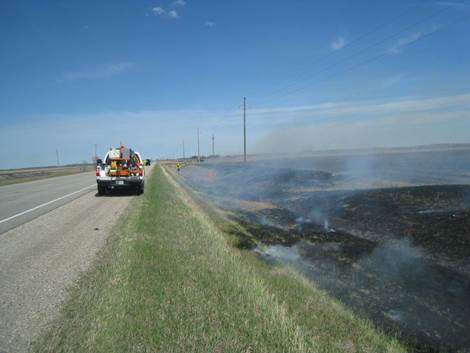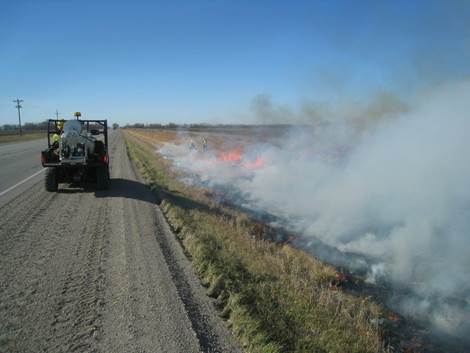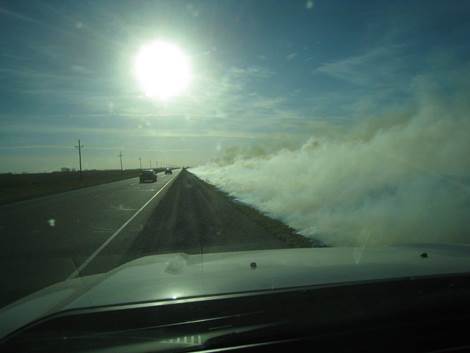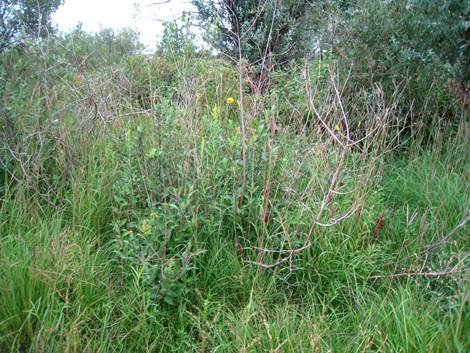More about how prescribed fires work
A successful fire season can be a welcome change after years of uncooperative weather and various scheduling constraints. In 2015, the MnDOT District 2 fire crew completed three successful burns, all on Hwy 75 in the southwest subarea: two last spring and one this fall.
How are prescribed fires used?
Prescribed fires are being used on roadsides to improve the growth of native vegetation. While these fires positively affect the control of weeds and brush, their primary benefit lies in creating healthier roadside vegetation that is better able to perform its roadside functions, including soil stabilization, stormwater management, resistance to weed invasion and, in some situations, control of blowing snow. Prescribed fires also provide auxiliary benefits such as improving the appearance of roadsides and maintaining habitat for wildlife and rare plants.
How are fire crew members trained?
Fire crew members are trained as wildland firefighters, which meets the requirements of the MnDOT Prescribed Fire Policy as well as standards used by the Minnesota DNR and federal land management agencies. It is this training and a lot of planning that ensure that prescribed fires can be implemented safely and effectively. The crew must be ready to take advantage of the right weather conditions when they occur. Coordination also needs to involve law enforcement, fire departments, adjacent railroads, neighboring landowners, the media, and others to make the burn go smoothly.
What do prescribed fires look like?
Here are a few pictures highlighting some of the District 2 fire crew's work in 2015.

The start of the first Spring burn on Hwy 75 southwest of Crookston. A drip torch is used to light close to the downwind edge while crew members on foot, on an ATV, and in an engine stand by — in case the fire creeps into the adjacent bean stubble.
Spring burn along Hwy 75 N of Crookston. When burning along railroad tracks, we first light close to the tracks so that the fire doesn't get a running start and jump over.
Fire crew members wear heat-resistant clothing, a fire safety shelter, and other personal protective equipment. But their first line of safety lies in a working knowledge of fire behavior and in maintaining effective communication — the black pouches on their fronts keep their hand-held radios readily accessible.
A primary objective of burns is to invigorate the warm-season native grasses. These tall, deep-rooted grasses grow tall and dense after a fire, increasing the roadside's ability to infiltrate stormwater, out-compete weeds, control blowing snow, and provide shelter to wildlife. The rusty hue in this picture is from two of these grass species, big bluestem and indiangrass. Compare this to the next picture.
This picture was taken in an un-burned portion adjacent to the previous picture. Notice how the rusty color of the warm-season grasses is sparse or absent. It still has a lot of forbs, but without periodic fire the warm-season grasses start to fade and the plant community as a whole gradually degrades.

